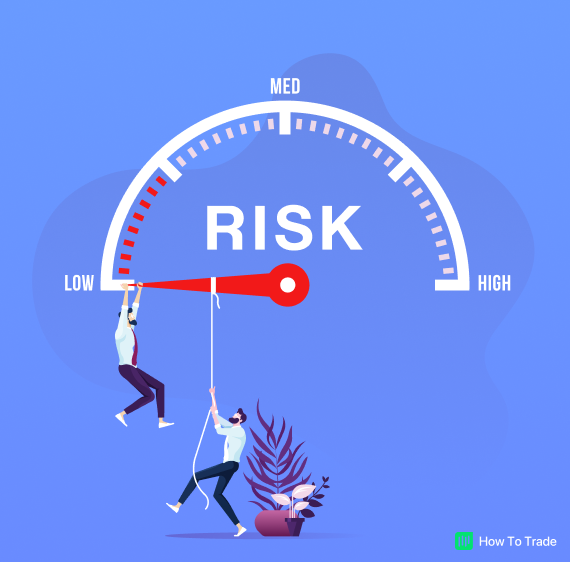The world of finance beckons with its allure of high returns and endless possibilities. Yet, beneath the surface of glamorous profits lies a realm of perils, particularly in the treacherous waters of option trading. Here’s a deep dive into the formidable hazards that lurk in these murky depths, arming you with vital knowledge to steer clear of costly missteps.

Image: ftmo.com
The Allure of Options: A Double-Edged Sword
Options offer tantalizing tools for augmenting returns and managing risk. However, the road to financial mastery is strewn with pitfalls. Options trading grants the right, not the obligation, to buy or sell an underlying asset at a predefined price on or before a fixed date. This unique characteristic unleashes powerful leverage, but it also amplifies potential losses.
The illusion of accessible riches often veils the inherent risks. Amateurs, mesmerized by the siren call of quick profits, dive headfirst into option trading without fully comprehending the lurking dangers. The potential for catastrophic losses overshadows the allure of extraordinary gains, leaving many drowning in a sea of regrets.
Decoding the Language of Options: A Beginner’s Guide
Navigating the labyrinth of option trading necessitates a firm grasp of its specialized vocabulary. Options contracts are characterized by three key attributes: the underlying asset, the strike price, and the expiration date.
- Underlying Asset: The asset associated with the option contract, such as a stock, bond, commodity, or currency.
- Strike Price: The predetermined price at which the option holder can buy or sell the underlying asset.
- Expiration Date: The date upon which the option contract expires and becomes worthless.
The combination of these elements determines the specific rights and obligations associated with each option contract, laying the foundation for both potential profits and lurking perils.
Time Decay: The Silent Assassin
Among the many perils that plague option traders, time decay stands out as a formidable foe. As an option contract approaches its expiration date, its value relentlessly diminishes, eroded by a relentless march of time. This phenomenon, known as time decay, stems from the diminishing probability of the option finishing in the money – a cruel reminder of the fleeting nature of opportunities.
Imagine an option that grants the right to buy a stock at $100, with an expiration date six months away. If the stock price stagnates at $95, the option will gradually lose value as time progresses. By the time the expiration date arrives, the option may expire worthless, nullifying any potential gains. Time decay is an insidious force that option traders must constantly contend with, a constant drumbeat reminding them of the risks inherent in this arena.

Image: howtotrade.com
Volatility: The Unpredictable Force
In the realm of option trading, volatility reigns supreme as a formidable adversary. This elusive metric measures the magnitude of price fluctuations in the underlying asset. High volatility indicates wide price swings, while low volatility suggests relatively stable prices.
Option traders must be keenly attuned to volatility, as it exerts a significant influence on option premiums. The higher the volatility, the more expensive the option, as it carries a greater likelihood of being profitable. However, this seemingly desirable characteristic comes at a cost. High volatility also amplifies the risk of significant losses, as rapid price swings can render options worthless in a matter of moments.
Leverage: A Double-Edged Sword
Leverage, a defining characteristic of option trading, empowers traders to control a substantial position with a relatively small investment. This alluring aspect of options trading amplifies both potential gains and losses.
Suppose an option trader purchases a call option with a leverage of 10:1. A 10% increase in the underlying asset’s price translates into a 100% return on the trader’s initial investment. However, this magnified potential for profit comes with a sobering corollary – a 10% decline in the asset’s price inflicts a devastating 100% loss on the trader’s investment. Leverage can be a double-edged sword, amplifying rewards while simultaneously exacerbating risks.
Unforeseen Market Events: The Unpredictable
The financial markets are a dynamic and often unpredictable realm, where unforeseen events can wreak havoc on the most carefully laid trading plans. Geopolitical crises, economic downturns, and natural disasters are just a few of the many potential catalysts for market turmoil.
In the face of such unanticipated events, option traders are left at the mercy of volatile markets. Option values can swing wildly, leaving traders exposed to substantial losses. The unpredictable nature of market events underscores the importance of risk management and the need to always be prepared for the unexpected.
Expert Advice for Navigating the Perils of Option Trading
Venturing into the realm of option trading requires careful consideration and a deep understanding of the inherent risks. Seasoned traders and financial experts have gleaned valuable insights and developed prudent strategies to mitigate these hazards.
One such strategy involves diversifying option trades across multiple underlying assets, reducing the impact of unfavorable price movements in any single asset. Additionally, traders should exercise caution when employing leverage, carefully weighing the potential rewards against the risks. Embracing a disciplined approach to option trading, including setting clear profit targets and stop-loss orders, is crucial for preserving capital and managing risk effectively.
The Power of Knowledge: Understanding Options Trading
Conquering the hazards of option trading begins with acquiring a thorough understanding of this complex financial instrument. Educate yourself through books, online courses, and seminars to grasp the intricacies of options contracts, including their unique characteristics, pricing dynamics, and risk factors.
Seek guidance from experienced option traders, mentors, and financial advisors who can provide invaluable insights and guidance. The more knowledgeable you become, the better equipped you’ll be to navigate the treacherous waters of option trading, minimizing risks and maximizing your chances of success.
Frequently Asked Questions on the Hazards of Option Trading
Q: What is the most significant risk associated with option trading?
A: The primary risk in option trading stems from the potential for substantial financial losses, as options can expire worthless or lose value rapidly due to time decay and volatility.
Q: How can I mitigate the risks of option trading?
A: Diversifying trades, exercising caution with leverage, setting profit targets and stop-loss orders, and seeking education and guidance from experienced traders are effective strategies for mitigating risks.
Q: What are the signs of a risky option trade?
A: High leverage, short expiration dates, and options on volatile underlying assets are all indicators of potentially risky option trades.
Hazards Of Option Trading

Image: www.ibgeographypods.org
Conclusion: Steering Clear of the Perils of Option Trading
The allure of option trading is undeniable, yet it is crucial to approach this arena with a clear understanding of the formidable hazards that lie in wait. By embracing prudent risk management strategies, educating yourself thoroughly, and seeking guidance from experienced traders, you can navigate the treacherous waters of option trading with increased confidence and a heightened chance of success.
Are you ready to embark on a journey into the realm of option trading, armed with the knowledge to mitigate risks and unlock its potential rewards? Take the first step today by delving into the depths of this article, absorbing its insights, and preparing yourself for the challenges that await.






